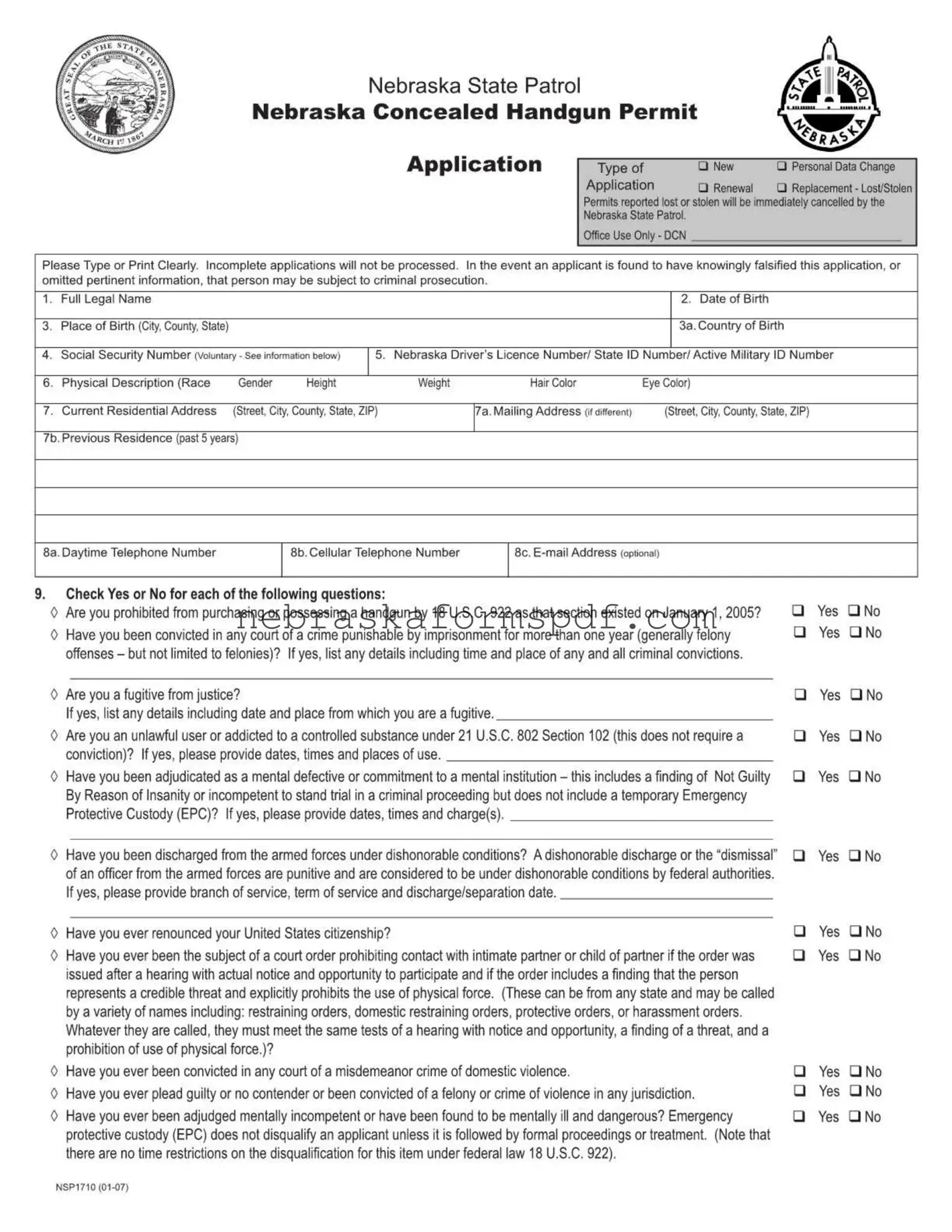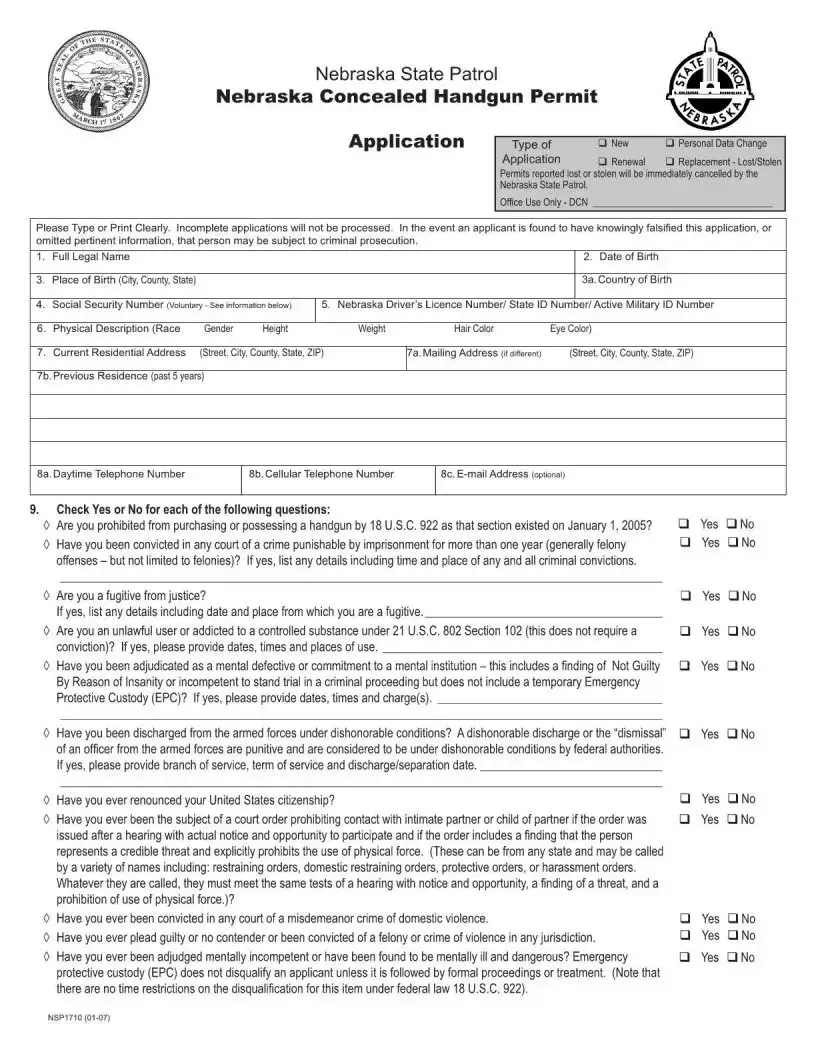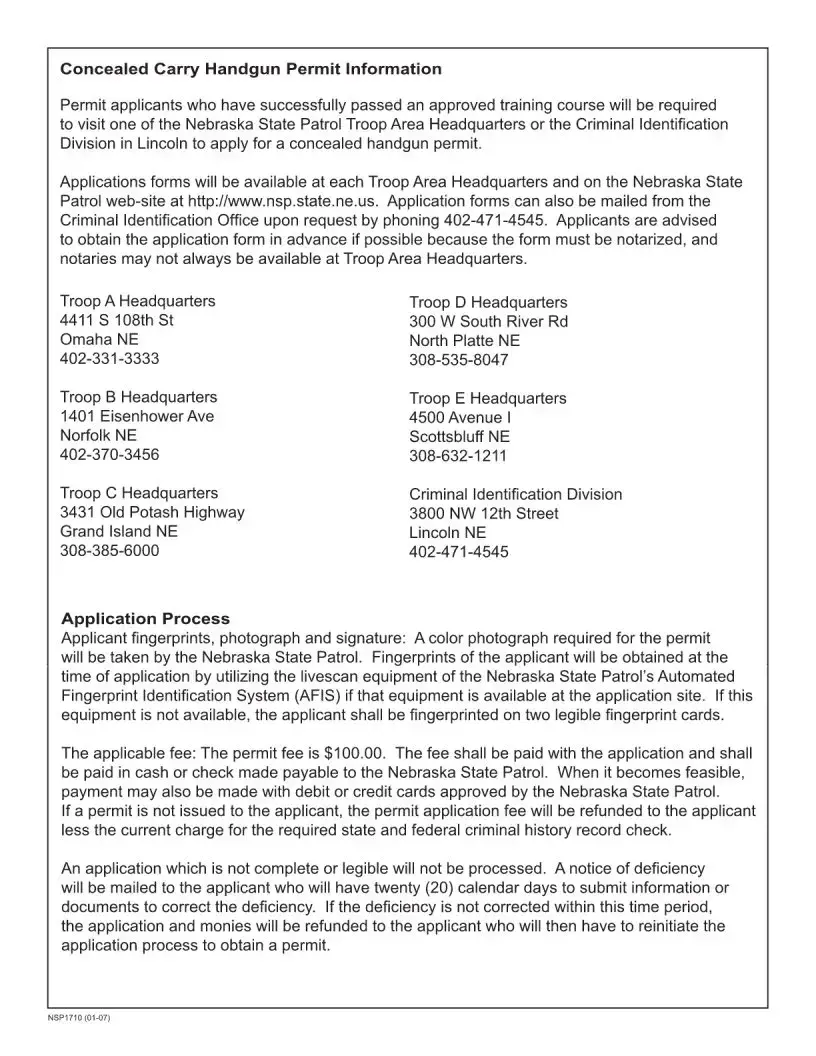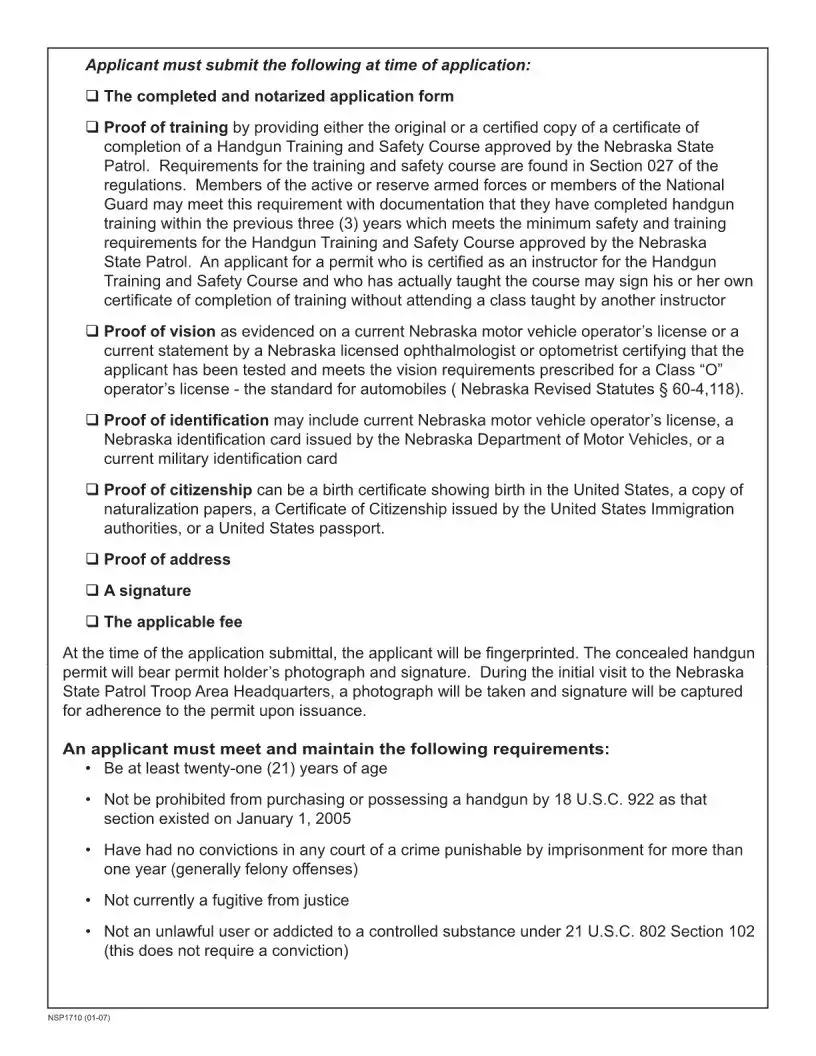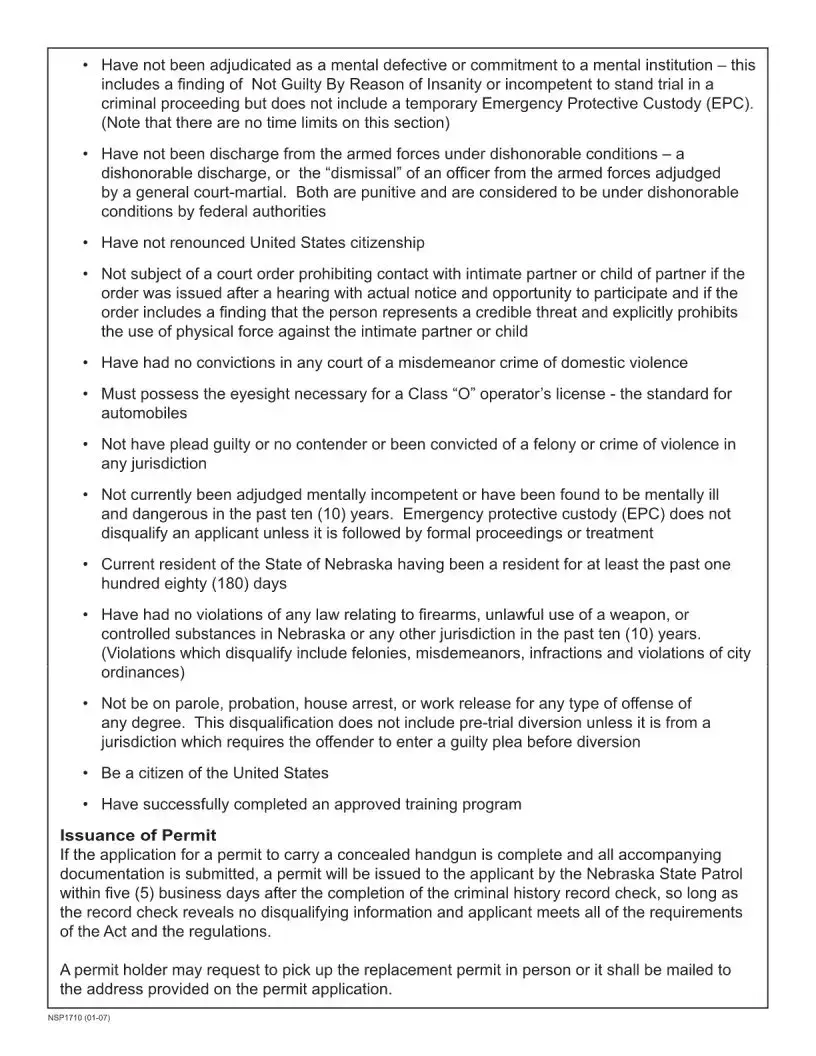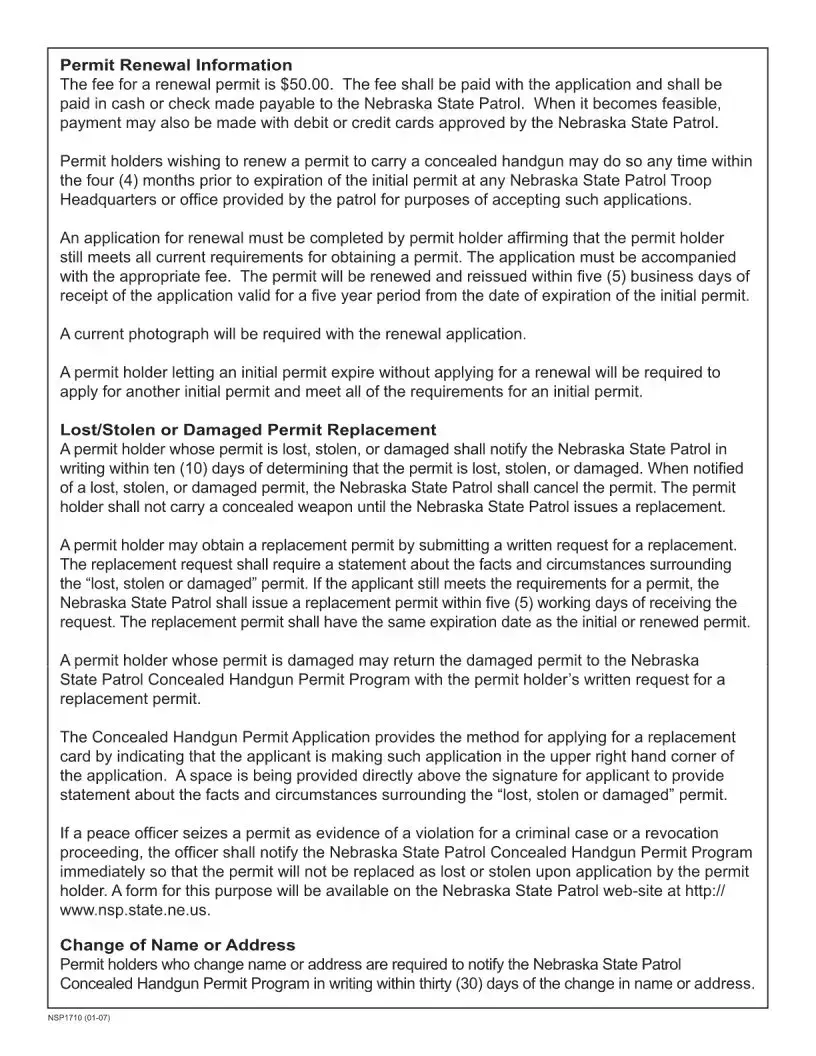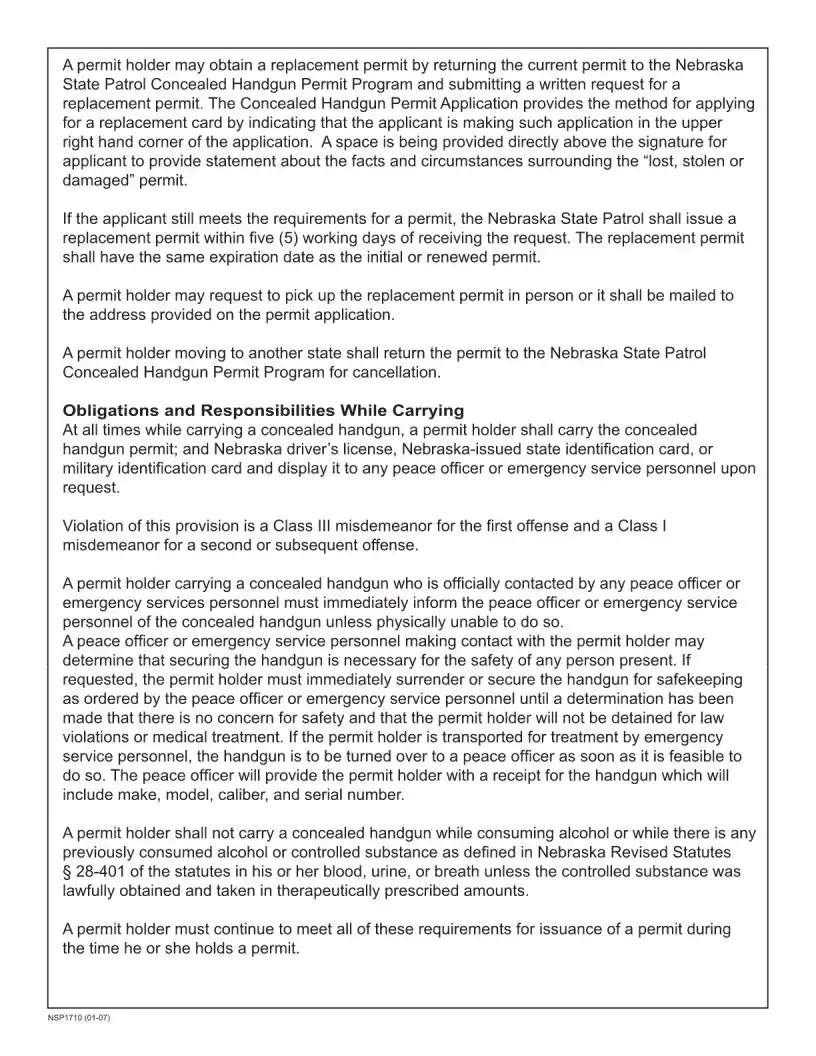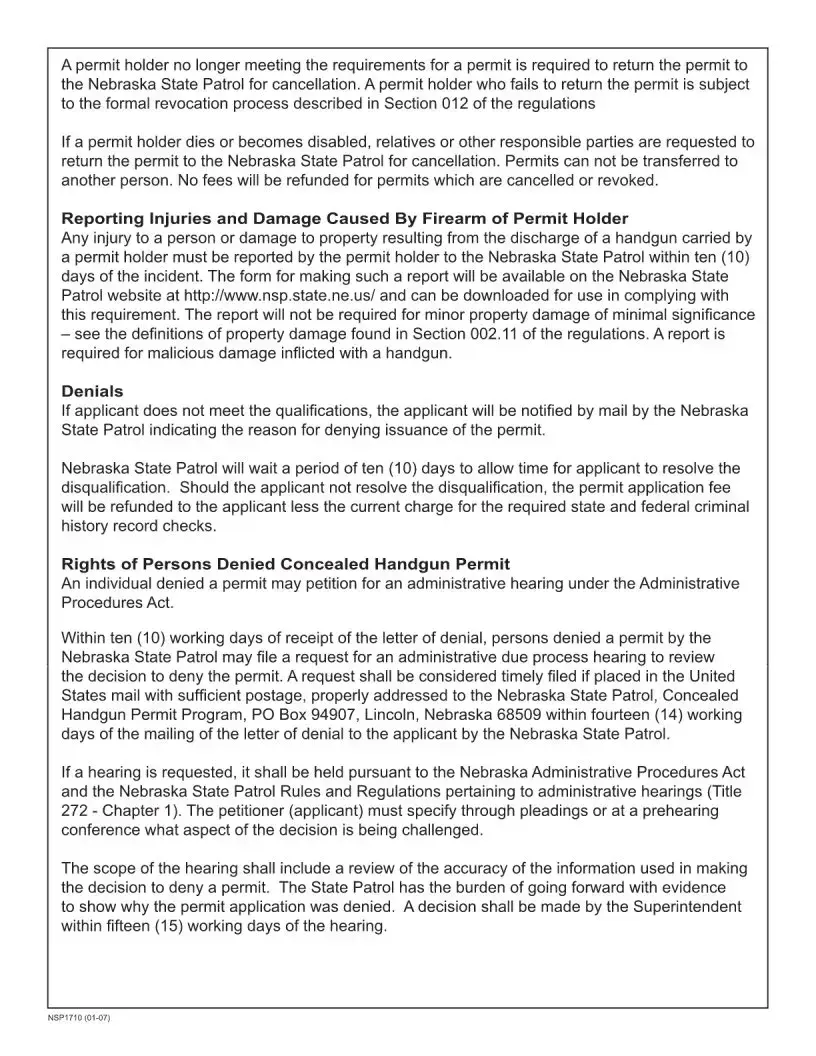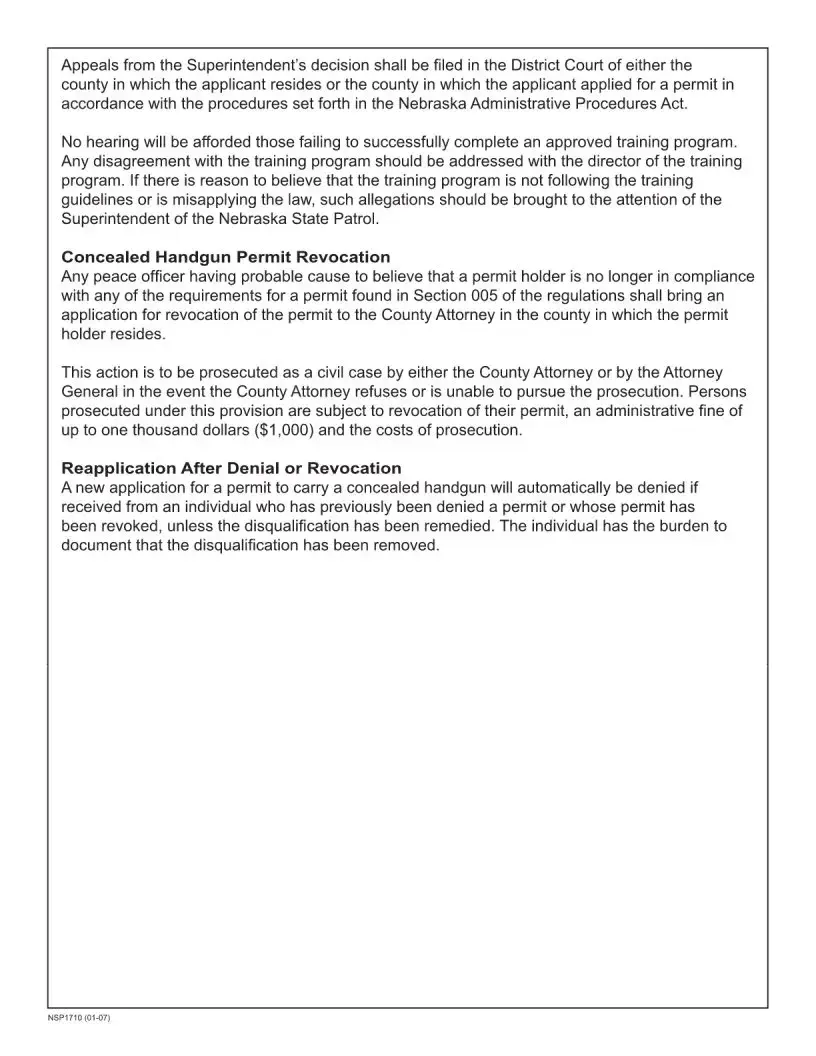In the realm of legal documentation and processes within Nebraska, the Nebraska Nsp1710 form stands as a critical document, touching upon the intricate balance between law enforcement procedures and civilian rights. This form, utilized primarily by the Nebraska State Patrol, serves several paramount purposes, from documenting instances of interaction between law enforcement officers and civilians to ensuring compliance with state and federal regulations surrounding such engagements. Its significance cannot be overstated, as it meticulously records crucial details that may affect the outcome of legal proceedings or investigations. Moreover, the Nsp1710 form functions as a safeguard for both the officer and the civilian, providing a transparent account of the encounter. The careful completion and preservation of this form are fundamental for maintaining the integrity of law enforcement operations and fostering trust within the community by promoting accountability and transparency. As such, understanding its structure, requirements, and implications is essential for professionals navigating the legal system, law enforcement personnel, and civilians alike, ensuring that rights are protected and duties are clearly defined.
